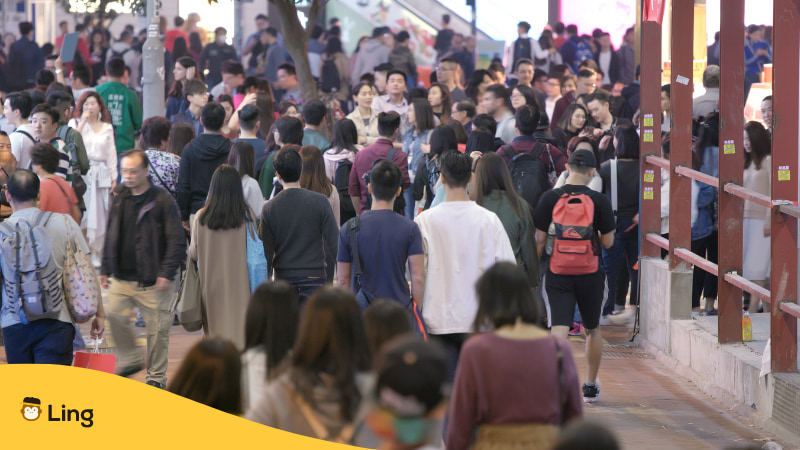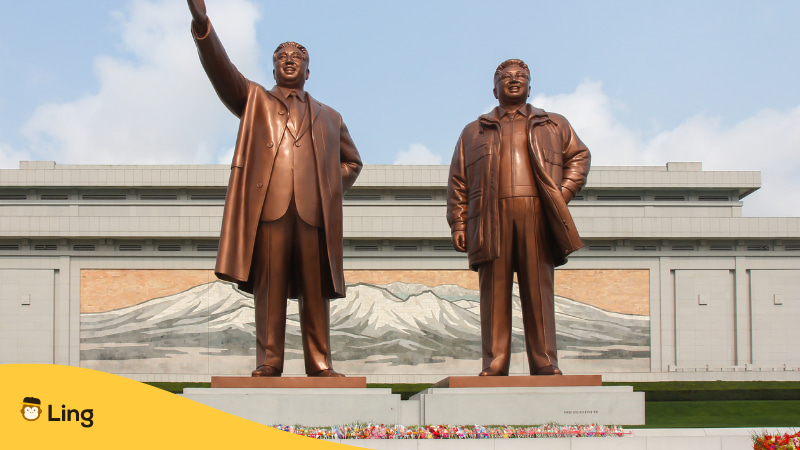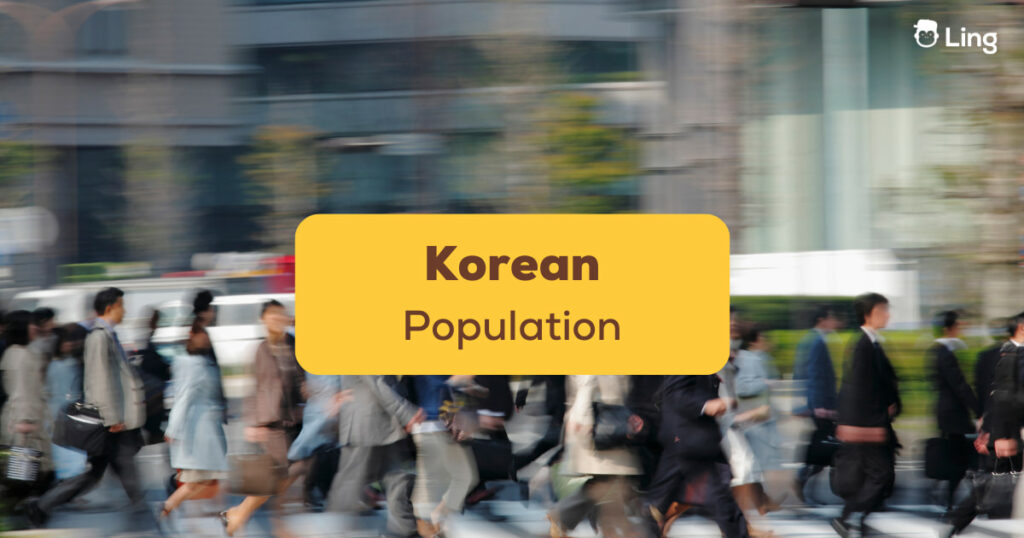Curious about the Korean population (or 인구 – ingu in Hangeul) and how it is distributed around the country? Stop your search and read this article, where I will tell you about the country’s population density and evolution over the last few years.
Based on my experience, the first time I stepped foot in South Korea, I also saw how the population seemed to be much older. It’s pretty much like the Japanese population, to be honest, and now I have statistics that back my opinion.
Both North Korea, or 조선 (Joseon), and South Korea, or 한국 (Hanguk), are following a declining trend in terms of their population. According to the United Nations publication “World Population Prospects: The 2022 Revision”, Korea’s population will decline to 61 million in 2070 after peaking at 78 million in 2022. This fact is mainly due to South Korea’s declining population, which has already been a case study by many experts. According to United Nations, South Korea’s downward trajectory that started in 2021 when it came to roughly 52 million will continue to drop to 38 million in 2070. North Korea will follow this projection and start it is declining trajectory after peaking in 2023.
As if discussing this topic was not interesting enough, I’m also going to give you a series of vocabulary in Korean about the population that you’ll find super useful for your next discussion with your Korean friend about why the population is following this trend. Keep reading until the end and absorb all the information I have to give you!

Korean Fertility: A Case Study
South Korea’s population used to be relatively young. However, this younger population has become a smaller share of the total population in less than two decades. On the other side of the spectrum, the South Korean population over 65 has been growing at a concerning pace since 2010. Based on this, Korea is expected to become the country with the oldest population by 2070, reaching 46.4% of the population in this range. In a country where life expectancy is reaching 83.5 years, the high aging rate of South Korea’s population is a topic to be taken with care and seriousness.
South Korea is one of the planet’s most densely populated countries, with a density of 503 people per square kilometer. However, this was not a factor in what happened in 2021. In a surprising turn of events, South Korea’s population recorded its first-ever decline in total since 1949, coming down to roughly 52 million.
South Korea’s population decline and aging are primarily due to the declining fertility rate that has set records worldwide. South Korea became the first country in the world to see its total fertility rate fall below 1 percent. These records are negative as Korea is the second country in the world with the lowest fertility rate of 0.81 births per woman, just behind Hong Kong’s 0.75.
The decline in the population and continuing aging is a major concern for Korea’s economy, as working-age people will continue to drop and productivity will continue its downward trajectory.

Korean Population Census
Based on the latest census performed by the United Nations, the South Korean population stands at 51,370,341, while North Korea is 26,037,881, making a total of 77,408,222 in 2022.
Korean Demographics
North Korea
The current population of North Korea is 26,074,771, based on projections of the latest United Nations data. This population is divided into the following age gaps:
- 0-14 years: 20.33% (male 2,680,145/female 2,571,334)
- 15-24 years: 14.39% (male 1,873,814/female 1,842,269)
- 25-54 years: 43.77% (male 5,671,900/female 5,633,861)
- 55-64 years: 11.77% (male 1,454,000/female 1,585,830)
- 65 years and over: 9.75% (male 878,176/female 1,640,031) (2021 est.)
South Korea
The demographic structure of South Korea has undergone significant changes in the last few decades. After the Korean War (1950-1953), the population grew rapidly until the 1990s, but growth has slowed substantially in recent years. According to the United Nations population division, the total South Korean population is 51,370,341. This population is divided into the following age gaps:
- 0–14 years: 13.21% (male 3,484,398,/female 3,276,984)
- 15–24 years: 12.66% (male 3,415,998/female 3,065,144)
- 25–54 years: 45.52% (male 11,992,462/female 11,303,726)
- 55–64 years: 14.49% (male 3,660,888/female 3,756,947)
- 65 years and over: 14.12% (male 3,080,601/female 4,144,151)
Population Density In Different Cities

South Korea
Seoul – 서울 (Seoul)
Seoul is by far the biggest city in Korea. This major metropolis, the capital of South Korea, has a population of 9,586,195 people. Officially known as a special city, Seoul was rated Asia’s most liveable city with the second highest quality of life globally.

Busan – 부산 (Busan)
Second, in line is the South Korean city of Busan. Officially known as Busan Metropolitan City, it is located in the Southeast area of South Korea and houses 3,411,829 people.

North Korea
Pyongyang – 평양 (pyeong-yang)
The capital of North Korea comes next in line with a population of 3,255,288. Also known as the “Capital of the Revolution,” it is one of the oldest cities in Korea.
Important Vocabulary About The Korean Population
To complement this information, we’ve just learned about the Korean Population. Let’s learn a few important vocabularies that you might want to know if you, for example, intend to discuss this topic with your Korean friend. Learning terms about population is one of the more advanced stages in your Korean learning process, thus dominating these words guarantees that you’ll step up your game while in a conversation in Korean.
But firstly, how do you say the word population? In Korean, the population is written as 인구 in Hangul, or ingu in the Romanized version. In the next table is a list of these vocabularies for you to learn, memorize, and practice pronunciation by clicking on the little blue play button.
Want To Visit Korea And Become Fluent In Korean Language? Learn With Ling!
Korea’s population is rapidly decreasing. However, its culture, traditions, and language are still something widely broadcast all across the globe. Korean shows are taking the screens by storm, and Korean food is spreading in the same way as well. If you haven’t embraced the Korean train and started talking a bit of the language that supports all this, you’re already one step behind the rest of the world!
Don’t worry. It is not too late yet! You’re more than in time to start learning Korean! I have the perfect tool to help you master this fairly complex language quicker than you might expect!
It is called the Ling app and has helped me dominate many other languages. Our team of experts develops this application to teach you a foreign language in a fun and interactive way.
If you’re thinking of boring scheduled classes with big textbooks, you couldn’t be more wrong. This language course is run by yourself, where you define your pace and your rhythm. When you want to learn, you must log in on the app tightly tucked in your smartphone and get back to where you left off! Sounds easy, right? That’s because it is! With only 15 minutes a day, you’ll be making progress, learning a new language, and improving your communication and listening skills.
With the Ling app, you’ll learn many Korean vocabularies like sports, music, food, and many others! All this through writing activities, listening exercises, and alphabet translations.
As you can see, Ling has everything you may need to start your learning journey! Download the Ling app on the Play Store or App Store and start talking in Korean today! Let’s start it together.
P.S.: Tell us in the comments how it has been! We’d love to know your progress!





















